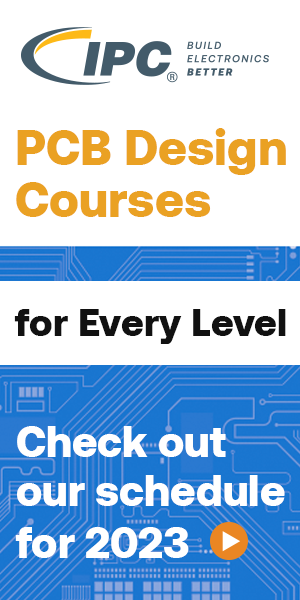From material selection and understanding laminate datasheets, to impedance planning, glass weave skew and rigid-flex materials, topic expert Bill Hargin has written a unique book on PCB stackups.
According to the author, “The difference between a high-speed PCB design that can be built, and a design that should be built, depends upon the backbone of the design itself: the stackup. The stackup touches every single high-speed signal and yet has had surprisingly little written about it.”
While perhaps not the final word on the subject of stackups, this book is a good place to kick off a broader discussion of stackup planning and material selection in an effort to comprehend what Hargin calls, “the design within the design.”
ISBN: 979-8-9856020-1-2
ISBN POD: 9781959894018
 Bill Hargin is the CEO (Chief Everything Officer) at
Bill Hargin is the CEO (Chief Everything Officer) at
Z-zero, developer of the PCB stackup design and material selection software Z-planner Enterprise. Bill is an industry pioneer, with more than 25 years working in PCB signal integrity and manufacturing. Author of dozens of articles on signal integrity, stackup design, and material selection, Bill is a regular contributor and columnist for a variety of industry publications, as well as a contributing author for the Printed Circuits Handbook. Bill served as director of marketing for HyperLynx SI software and director of North American marketing for Nan Ya Plastic’s PCB laminate division in Taiwan. More than 10,000 engineers and PCB designers in over 30 countries have taken his workshops on high-speed PCB design. He holds a mechanical engineering degree with an MBA from WSU. Bill currently lives in Washington state and is an avid volunteer, supporting Little League baseball and softball.
Z-zero, LLC, based in Redmond, Washington, offers a comprehensive software solution to close the gap between hardware design teams and their PCB fabricators. Designed to look and feel like a spreadsheet, Z-zero's software enables hardware design teams to automate the stackup design and material selection process within legacy PCB design flows. For more information or to download a free evaluation of the software and stackup-design tutorial, please visit z-zero.com.
About Siemens Digital Industries Software
Siemens Digital Industries Software is driving transformation to enable a digital enterprise where engineering, manufacturing and electronics design meet tomorrow. Our solutions help companies of all sizes create and leverage digital twins that provide organizations with new insights, opportunities and levels of automation to drive innovation. For more information on Siemens Digital Industries Software products and services, visit siemens.com/software or follow us on LinkedIn, Twitter, Facebook and Instagram. Siemens Digital Industries Software – Where today meets tomorrow. Siemens Digital Industries Software—Where today meets tomorrow.
 Eric Bogatin Dean, Signal Integrity Academy
Eric Bogatin Dean, Signal Integrity Academy
Eric Bogatin is currently the dean of the Teledyne LeCroy Signal Integrity Academy. Additionally, he is an adjunct professor at the University of Colorado – Boulder in the ECEE department, where he teaches a graduate class in signal integrity and is also the editor of the new journal Signal [...]
PCB Design Manager, L3Harris Michael Ingham
Michael Ingham
A veteran of the U.S. Navy, Michael began his career in PCB design in 1984 as an engineering tech, repairing and designing high-speed boards with tape and light tables, before getting his first CAD exposure. He worked his way through school and obtained his BSEE from California Polytechnic State [...]
Chapter Summaries
-
Chapter 1
Materials Matter
Chapter 1 discusses the importance of selecting the correct material and beginning stackup planning early in the design process.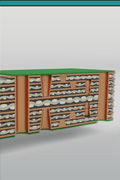
-
Chapter 2
Understanding Laminate Datasheets
Chapter 2 explains how to make sense of laminate data sheets and which parameters to consider when reviewing available laminates.
-
Chapter 3
Cutting Your Losses
Chapter 3 focuses on signal loss as it relates to stackup design, including dielectric and conductor loss, and methods for avoiding under- or over-designing your board.
-
Chapter 4
Material Qualification and Selection
Chapter 4 covers the material qualification process, including a variety of trade-offs including cost vs. performance.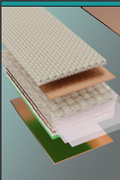
-
Chapter 5
Impedance Planning
Chapter 5 explores impedance planning, some common impedance calculation errors, and the potential effects of impedance errors on your stackup.
-
Chapter 6
Glass Weave Skew
Chapter 6 discusses glass-weave skew—what it is, how to mitigate it, and why technologists should be concerned about it when designing high-speed PCBs.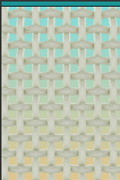
-
Chapter 7
Rigid-Flex Materials
Chapter 7 covers various types of rigid-flex stackups, and it also provides tips and techniques for creating the perfect rigid-flex stackup design.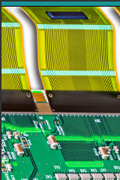
-
Chapter 8
The Bottom Line
Chapter 8 explains why stackup design is so critical to the success of your design, and why improper stackup is one of the leading causes of PCB design respins.








